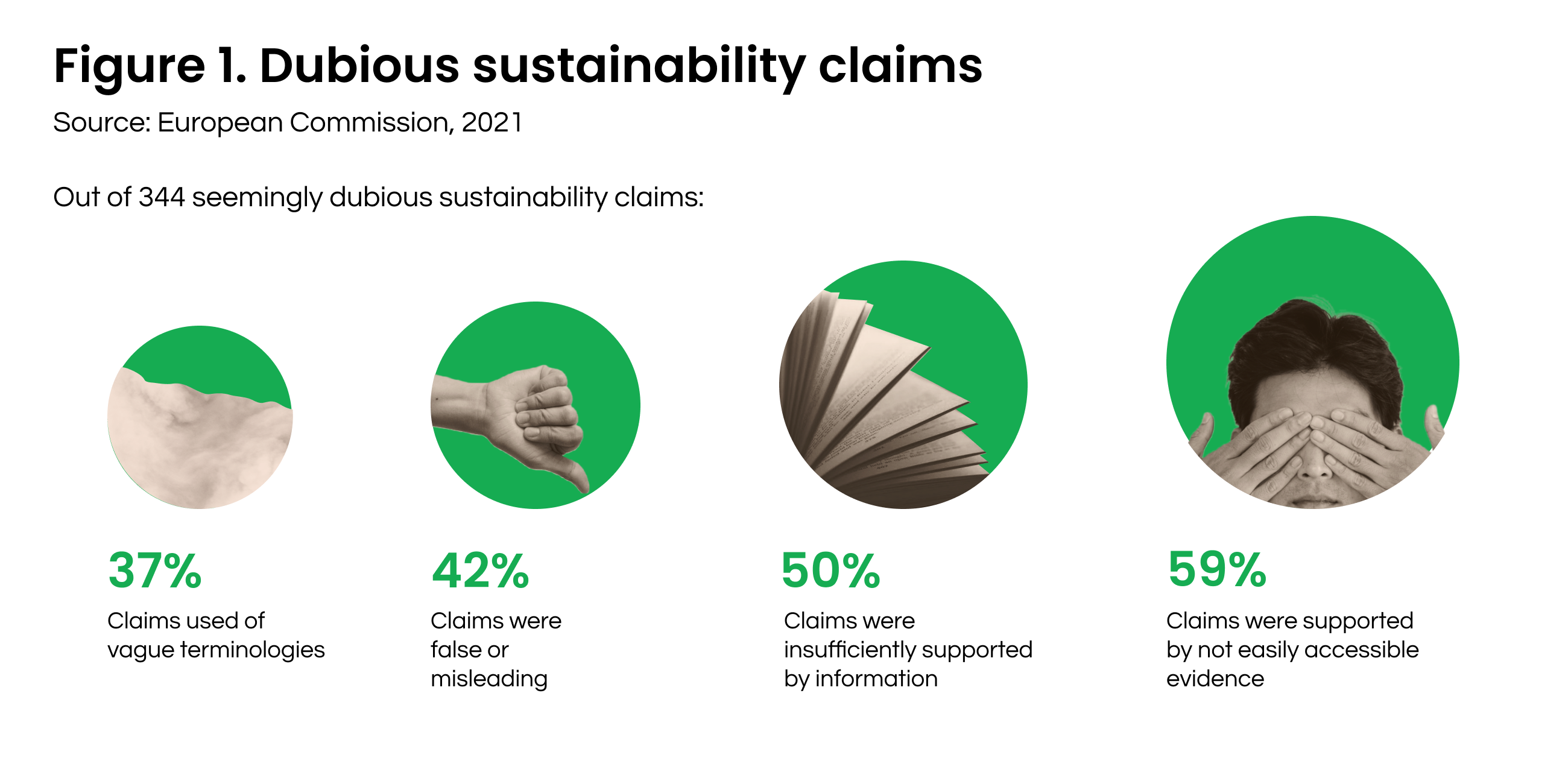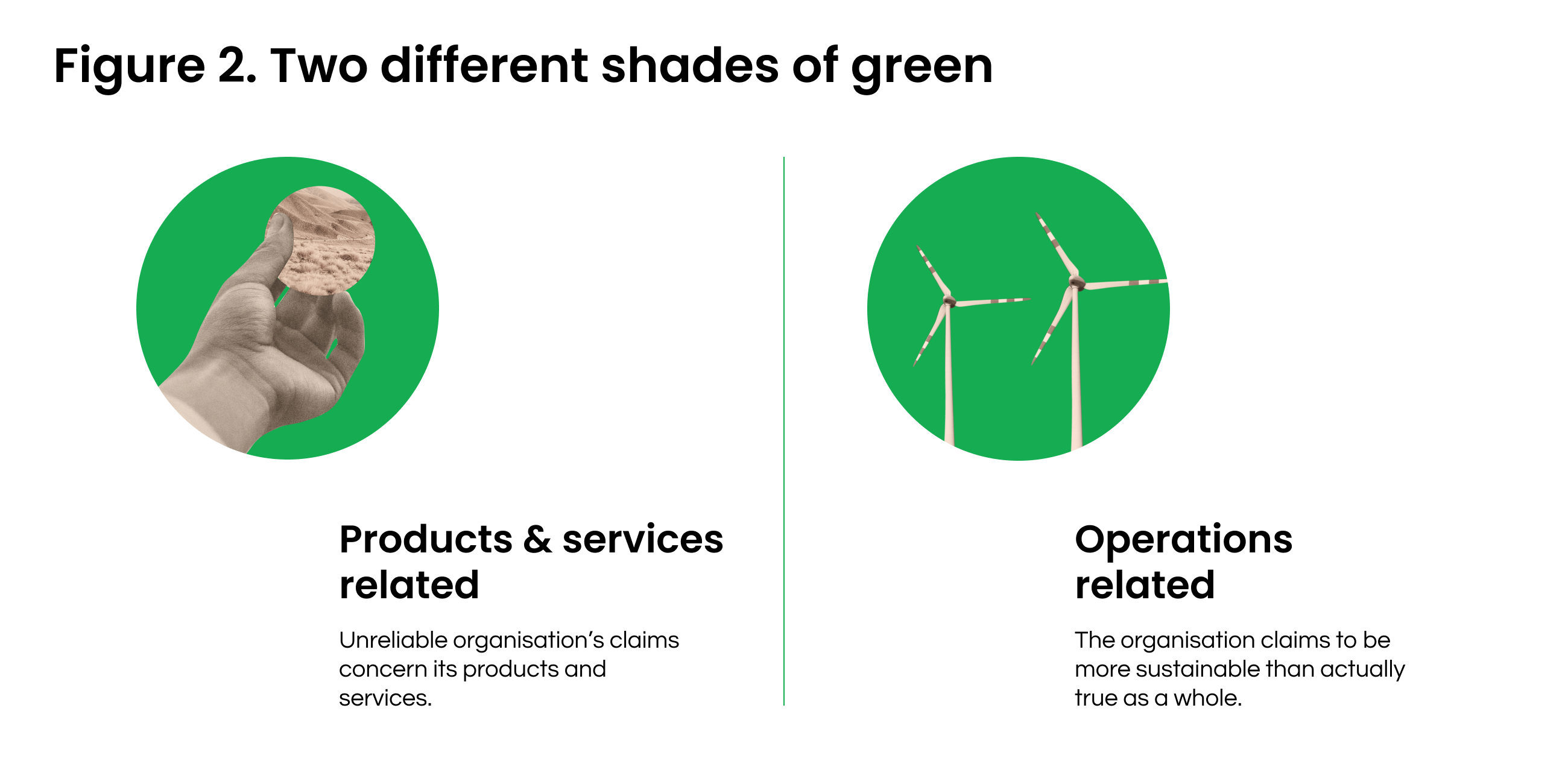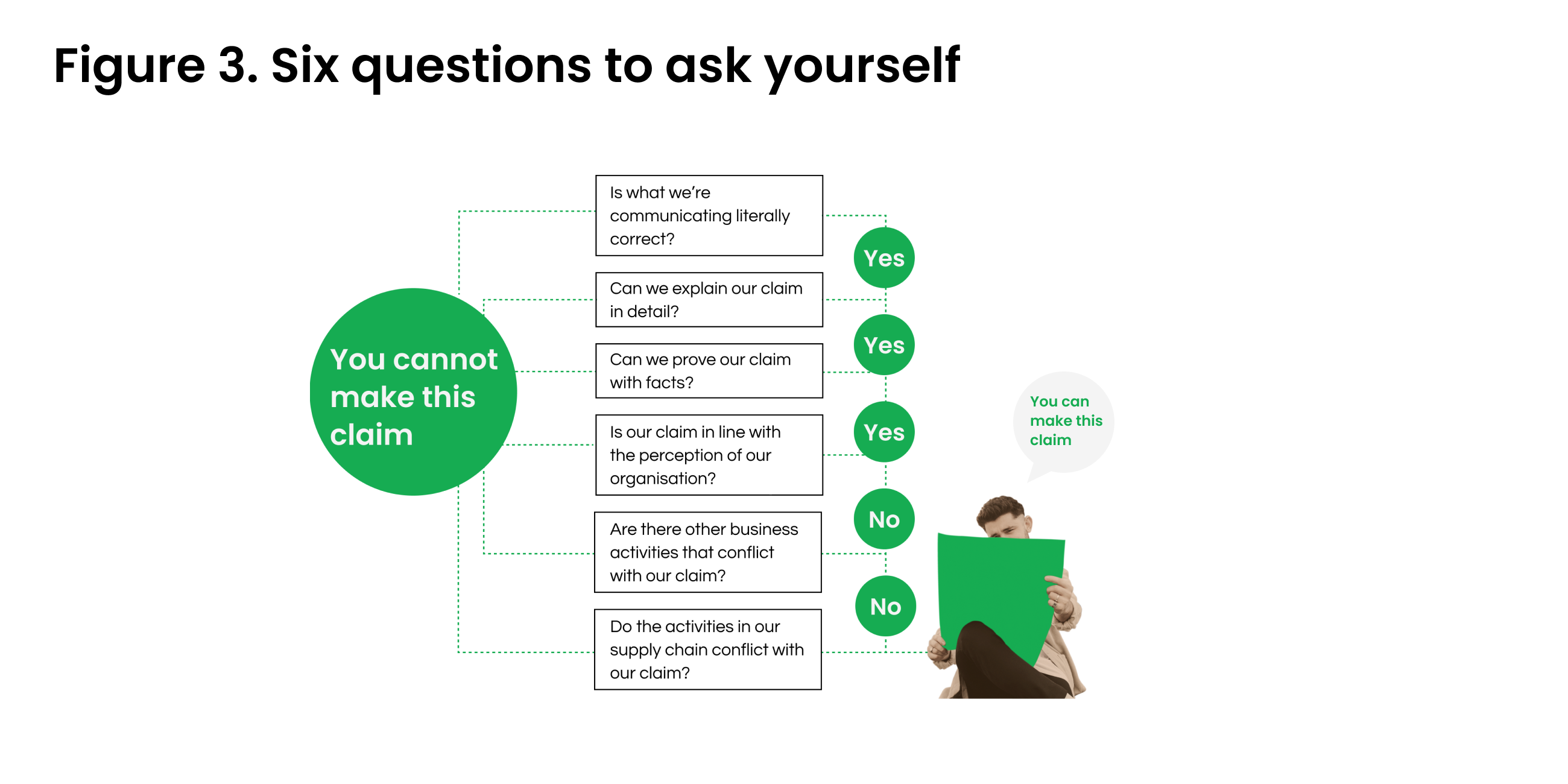Guide: How to Avoid Greenwashing

Greenwashing is a term that sends shivers down the spines of communications, PR and marketing managers. No organisation wants to be accused of it, nor associated with it. In this article, we break down what it is, and how to avoid it altogether.
Consumers and investors alike care about sustainability. It’s time for a wake-up call for organisations that have not realised this yet.
- 50% of professionally managed assets are predicted to constitute ESG-mandated assets by 2024
- 40% of firms' online green claims could be misleading
As such, sustainability is a topic of consumer protection. Regulatory and supervisory authorities are on a hunt to crack down on greenwashing tactics.
What is Greenwashing?
Greenwashing refers to the act of conveying a false impression or providing misleading information that makes people believe that an organisation is doing more to be sustainable than it really is. Greenwashing, whether done intentionally or unintentionally, is a practice that is deceptive to eco-conscious consumers. Moreover, it fuels unfair competition while blocking true progress toward a sustainable planet.
Regulatory trends to stop Greenwashing
The European Commission, the UK CMA, and the Dutch ACM are just a handful of regulatory authorities that have announced advance investigations into misleading and/or false information on sustainability. In 2022, the European Commission has already filed a proposal to amend the EU Directive on Unfair Commercial Practices. This proposal for amendment of the directive includes a prohibition of deceptive environmental claims. Similarly, in the US, the Securities andExchange Commission has taken action towards setting standards on ESG disclosures and the use of ESG terminologies towards investors.
Fashion brands have regularly been in the spotlight for making supposed eco-friendly and environmental claims that prove to be unsubstantiated.
Recently, companies such as H&M, ASOS, and ZARA are facing lawsuits in the US and the EU for their allegedly unfounded sustainability marketing. Questions have been raised about the legitimacy of claims around organic cotton, green products and complete fashion lines as well as overall claims of being an environmentally friendly brand.
In January 2021, the European Commission conducted a sweep (screening of websites) on 344 seemingly dubious sustainability claims and concluded that:
- In 50% of the cases, claims are insufficiently backed by the information necessary for consumer judgments on the accuracy of such claims;
- In 37% of the cases, consumers were made to believe that a product did not have any negative environmental impact and society by the use of vague terminologies in claims;
- In 59% of the cases, evidence for the claims was not easily accessible to consumers;
- In 42% of the cases, consumer protection authorities had reasonable grounds to believe the claims were “false” or “misleading”.

At the same time, organisations are strongly encouraged to set ambitious ESG goals. This should be followed by disclosing their sustainability journey in a transparent and coherent way. Changing business as usual does not happen overnight. Those who take an effort to step up must be acknowledged for their continuous work.
However, without a clear worldwide accepted definition of “sustainability”, it can be challenging for organisations to avoid the lava floor while heading towards greener grounds. This does not need to be a bottleneck. Therefore, we provide some tips on how to avoid greenwashing.
Best practices to communicate your sustainability efforts
There are two types of greenwashing. The first one is with regard to claims on products /services offered. An example is the “Responsible Edit” collection of ASOS, for which the company had selected items for the collection based on certain sustainability criteria. These criteria did not meet the reasonable expectation consumers could have when the products were offered as “a responsible collection".

To avoid Greenwashing with claims made about products and services
- Be mindful of the claims you make. Make sure to consider how potential claims can be perceived by outsiders. Then, objectively determine whether the claim is reliable and unambiguous.
- Back up your claims with real evidence. Provide easily accessible information to substantiate your claims. Besides that, QR codes can be used to easily direct consumers to more relevant information on your organisation’s website. In any case, make sure your claims are:
- Clear and nuanced on the exact sustainability advantage of the product/service offered considering the environmental, social and ethical impact of the product.
- Backed with information on the full lifecycle of the product (incl. information on guaranteed durability);
- Accurate. Ensure your claims are substantiated with facts and make sure to review the facts from time to time to ensure accuracy;
- Fair and meaningful when you compare it with similar products/ services;
- supported by clear visuals. Avoid what is called 'stock photo sustainability' by using imagery that is proprietary to your organisation or supports the content. The photos or images should not be confusing or deceiving.
To avoid Greenwashing with claims on an organisation's operations as a whole
The second type of greenwashing is with regard to claims made about an organisation’s operations as a whole. In 2020, RyanAir claimed that they had “the lowest emissions of any major airline”. They were called back by the UK Advertising Standards Authority for portraying outdated information (2011 data was used for the claims made) and omitting relevant factors for calculating their emissions.
- Set clear ESG goals by:
- Involving internal and external stakeholders in meaningful engagement;
- Using necessary data to establish a baseline;
- Identifying and implementing the necessary measures to reach those goals.
- Assess and mitigate your greenwashing risks when you externally communicate your sustainability progress. Mitigating measures can be adopted in a formal working procedure. An example could be an operational risk management assessment of your marketing and buyer activities. Identify where the potential greenwashing hotspots are by having honest and open conversations with your employees.
- Align your organisation's sustainability reporting on progress towards your goals with internationally acclaimed reporting frameworks such as the GRI standards and SASB. As such, your organisation is guided by renowned standards to warrant transparent, specific, comparable and frequent reporting. For more information on sustainability reporting, read our Sustainability Reporting Guide.
- Seek third-party assurance of your core metrics or KPIs.

Conclusion
As the person responsible for sustainability in your organisation, it's important to work with your communications department to make sure to prevent greenwashing. Here are 6 simple questions you can ask internally:
- Is what we're communicating literally correct?
- Can we explain our claim in detail?
- Can we prove our claim with facts?
- Is our claim in line with the perception of our brand?
- Are there other business activities that conflict with our claim?
- Does our supply chain conflict with our claim?

